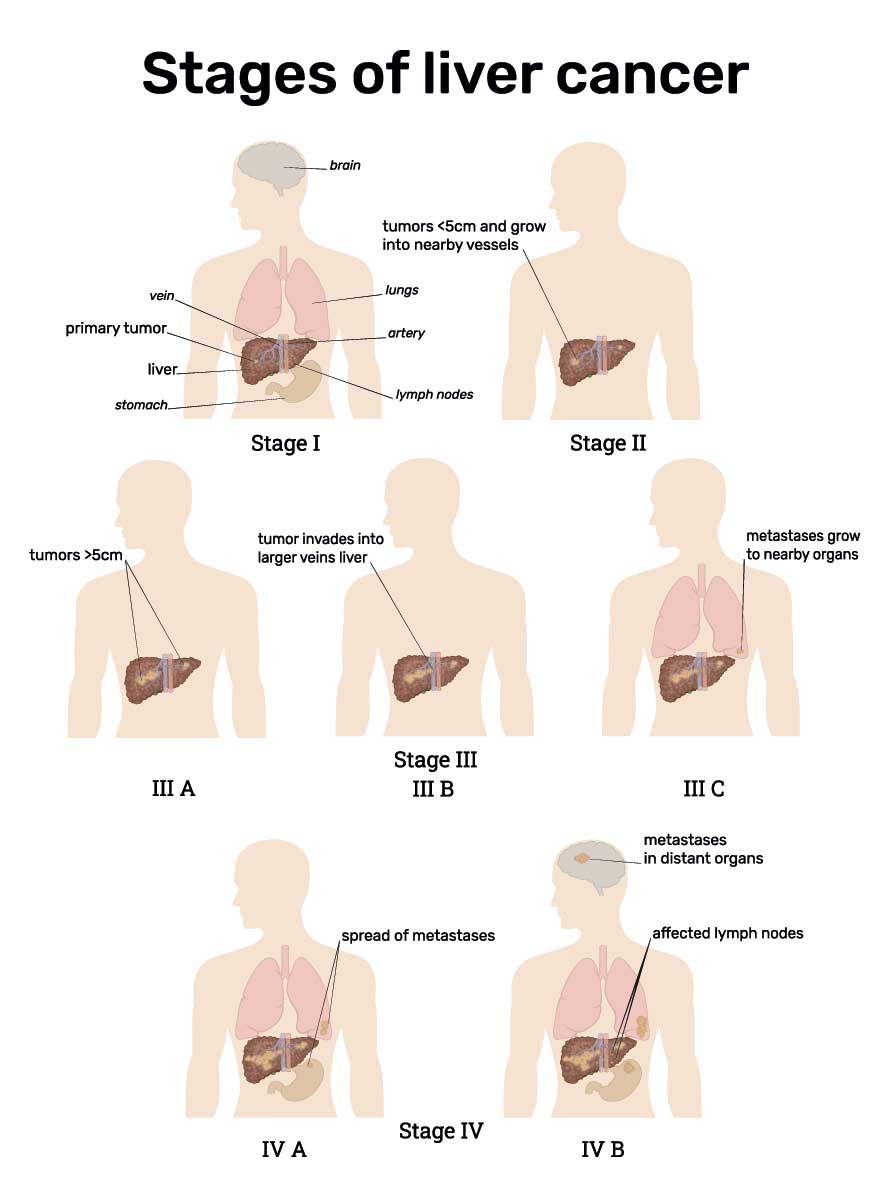Liver Cancer Stages
The liver is the largest solid organ in the body, located just under the rib cage on the right side of the abdomen. This vital organ performs many important functions, such as filtering toxins from the blood, maintaining healthy blood sugar levels and regulating blood clotting.
Liver cancer is relatively uncommon, but once it develops it tends to grow quickly. After confirming the diagnosis, a physician will stage the tumor to determine its size and the extent of its spread. Liver cancer stages provide important information that physicians can use to plan treatment and predict outcomes.
Experts have concluded that no one staging system can be used to accurately stage all liver tumors. The American Joint Committee on Cancer’s TNM staging system and Barcelona Clinic Liver Cancer (BCLC) staging system are commonly used options.
The TNM staging system
In the United States, liver cancer is often staged using the TNM system. “T,” which stands for tumor, is followed by a number that indicates the size of the tumor and how far it has spread. In general, the higher the number, the larger and/or more invasive the cancer:
- TX - Primary tumor cannot be assessed
- T0 - No evidence of primary tumor
- T1 - One tumor with no vascular invasion
- T2 - One tumor with vascular invasion or multiple tumors that are 5 centimeters or smaller in diameter
- T3a - Multiple tumors larger than 5 centimeters in diameter
- T3b - One or more tumors of any size that involve a major branch of the portal vein or hepatic vein
- T4 - One or more tumors with spread to adjacent organs other than the gallbladder or perforation of the visceral peritoneum
“N” stands for nodes, which is followed by a number that indicates whether the cancer has spread to the lymph nodes, and if so, to what extent:
- NX - Regional lymph nodes cannot be assessed
- N0 - No cancer in regional lymph nodes
- N1 - Cancer has spread to regional lymph nodes
“M” stands for metastasis, which is followed by a number that indicates whether the cancer has metastasized to distant organs or tissues.
- M0 - No metastasis
- M1 - Cancer has metastasized to at least one site distant from the kidney
Liver cancer stages are assigned based on the T, N and M values:
- Stage 1 - T1, N0 and M0
- Stage 2 - T2, N0 and M0
- Stage 2A - T3a, N0 and M0
- Stage 3B - T3b, N0 and M0
- Stage 3C - T4, N0 and M0
- Stage 4A - Any T, N1 and M0
- Stage 4B - Any T, any N and M1

The BCLC staging system
While the TNM system is widely used for liver cancer staging, it does not take into account the effects of declining liver function. The BCLC staging system factors in key aspects of liver health and classifies the cancer into five main stages:
- Stage 0 (very early stage) - The tumor is smaller than 2 centimeters in diameter, the tumor is not pressuring the portal vein and bilirubin levels are normal.
- Stage A (early stage) - The tumor is smaller than 5 centimeters in diameter, the tumor is pressuring the portal vein and bilirubin levels are normal or elevated.
- Stage B (intermediate stage) - There is a single large tumor or multiple tumors, but the liver is functioning well overall.
- Stage C (advanced stage) - The cancer has spread to blood vessels, lymph nodes or other organs, but the liver is functioning relatively well.
- Stage D - The liver is severely damaged and noticeable symptoms have developed.
Benefit from world-class care at Moffitt Cancer Center
The multispecialty team in Moffitt’s renowned Gastrointestinal Oncology Program offers comprehensive diagnostic services, staging and treatment options for liver cancer. To request an appointment with a specialist, call 1-888-663-3488 or submit a new patient registration form online. We do not require referrals.
Diagnosis
